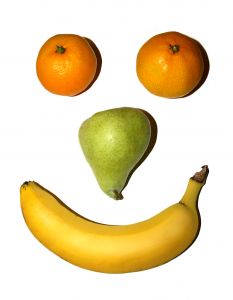March 9th, 2011 by AndrewSchorr in Better Health Network, Research, True Stories
No Comments »

Maybe you read the other day in The New York Times that the pharmaceutical industry has a problem. Big blockbuster drugs like Lipitor are going off patent and the industry leaders don’t have new blockbusters showing promise to replace them. So the big companies search for little companies with new discoveries and they consider buying them. Industry observers think the days of $5 billion-a-year drugs to lower cholesterol or control diabetes may be past for awhile, and the companies will have smaller hits with new compounds for autoimmune conditions and cancer.
When I saw my oncologist for a checkup yesterday — the news was good — we chatted about the article and the trend toward “niche science.” We welcomed it. We didn’t think — from our perspective — the world needed yet another drug to lower cholesterol. We need unique products to fight illnesses that remain daunting, some where there are no effective drugs at all. For example, my daughter has suffered for years from what seems to be an autoimmune condition called eosinophilic gastroenteritis (EGID). Her stomach gets inflamed with her own eosinophil cells. They would normally be marshaled to fight a parasite in her GI tract but in this case, there’s nothing to attack. So the cells make trouble on the lining of the stomach and cause pain and scarring. Right now, there’s no “magic bullet” to turn off these cells. My hope is some pharma scientists will come up with something to fill this unmet need.
In the waiting room before I saw my doctor at the cancer center in Seattle I overheard a woman on the phone speaking about her husband’s new diagnosis of pancreatic cancer. I was sitting at a patient education computer station nearby. When she was finished I introduced myself and showed her some webpages to give her education and hope: pancan.org and our Patient Power programs about the disease. She was grateful. I did tell her — and she already knew — that there was no miracle drug for pancreatic cancer and that it was a usually-fatal condition. But that there were exceptions and, hopefully, her husband would be one. Of course, wouldn’t an effective medicine be best? Read more »
*This blog post was originally published at Andrew's Blog*
February 22nd, 2011 by Medgadget in Better Health Network, Research
No Comments »

 The human genome has been around for a bit more than ten years, but on February 15, 2001, the first complete human genome sequence was published. This was nothing short of a revolution within medicine. Since then, great advancements have been made in our understanding of genetics and its associations with human traits and diseases.
The human genome has been around for a bit more than ten years, but on February 15, 2001, the first complete human genome sequence was published. This was nothing short of a revolution within medicine. Since then, great advancements have been made in our understanding of genetics and its associations with human traits and diseases.
Nature is celebrating this tenth birthday with a special titled “Human Genome at Ten.” In it, multiple papers reflect on what we learned and discovered, what is still unknown, and what we can expect for the near future. Best of all, Nature has packaged the special in a free iPad app for everyone to read, which features interactive graphs, videos, and audio commentaries.
Nature special: The Human Genome at Ten…
iTunes link: Nature Human Genome Special Edition…
*This blog post was originally published at Medgadget*
February 4th, 2011 by AnnMacDonald in Better Health Network, Health Tips
No Comments »

When I was growing up, my parents had a simple rule when it came to food: “Finish everything on your plate.” We had to sit at the table until we did.
They meant well. They wanted us to understand that food should not go to waste. The problem with this advice — and I’m sure I’m not the only American who grew up with it — is that we learned early on to eat everything put in front of us when we sat down to meals. Then the size of the plates grew — and so did the amount of food we consumed.
 It’s called portion inflation. Take a look at the illustration at left. It’s based on an analysis published in the Journal of the American Dietetic Association which found that typical restaurant portion sizes today are two to eight times as large as those in 1955. Back then, people who consumed a typical American meal (a hamburger, French fries, and a soda) had only one portion size to pick from. Today we can choose from multiple portion sizes: reasonable, big, bigger, and ridiculous (as I’ve come to think of the sizes listed in that last column).
It’s called portion inflation. Take a look at the illustration at left. It’s based on an analysis published in the Journal of the American Dietetic Association which found that typical restaurant portion sizes today are two to eight times as large as those in 1955. Back then, people who consumed a typical American meal (a hamburger, French fries, and a soda) had only one portion size to pick from. Today we can choose from multiple portion sizes: reasonable, big, bigger, and ridiculous (as I’ve come to think of the sizes listed in that last column).
Portion size matters. The bigger the portion, the more calories you can consume. An example using a table of calorie information available online in the nutrition section at McDonald’s: By choosing the largest size in each category, you’ll end up consuming nearly triple the number of calories in a meal as you would if you chose the smallest portions.
| Food |
Smallest size/calories |
Largest size/calories |
| Hamburger |
3.5 oz/250 calories |
11.1 oz/750 calories |
| French fries |
2.5 oz/230 calories |
5.4 oz/500 calories |
| Coca Cola |
12 oz/110 calories |
32 oz/310 calories |
| Total calories |
590 calories |
1,560 calories |
Partly as a result of portion inflation, we’re eating more. Dietary surveys indicate that, on a per capita basis, Americans consumed 200 calories more per day in the 1990s than they did in the 1970s. That may not sound like a lot, but over time extra calories translate into extra pounds. Some experts calculate that people who add 150 calories a day to their diets, without increasing physical activity to burn those calories off, will gain as many as 15 pounds in a year. Read more »
*This blog post was originally published at Harvard Health Blog*
January 27th, 2011 by BarbaraFicarraRN in Expert Interviews, Health Tips
No Comments »


Information circulating about the dangers of plastic containers has created fear and confusion. Are plastic containers toxic? Do harmful chemicals leach out into its contents? Do we need to discard all plastic containers?
Recently, I interacted in a live health chat on MedHelp about the safety of plastics. Scientist, Joe Schwarcz, Ph.D., Director of McGill University’s Office for Science and Society, talked about “The Real Truth About Plastics: What You Should And Shouldn’t Worry About.”
While Dr. Schwarcz states that some plastics like those made by Tupperware and Rubbermaid are safe to use, there are other plastics made of Bisphenol A (BPA) that may cause some concern, however he did not become alarmed.
There is extensive information on the safety of plastics, and reading some of it can easily cause panic and confusion, but the smartest step health consumers can do for themselves is to remain calm and don’t become alarmed. Gather the facts and determine what’s best for you.
The Facts About Bisphenol A (BPA)
Bisphenol A (BPA) is used to manufacture polycarbonate plastics. This type of plastic is used to make some types of beverage containers, compact disks, plastic dinnerware, impact-resistant safety equipment, automobile parts, and toys. BPA epoxy resins are used in the protective linings of food cans, in dental sealants, and in other products.
General exposure to BPA at low levels comes from eating food or drinking water stored in containers that have BPA. Small children may be exposed by hand-to-mouth and direct oral (mouth) contact with materials containing BPA. Dental treatment with BPA-containing sealants also results in short-term exposure. In addition, workers who manufacture products that contain BPA can be exposed.
How Does BPA Get Into The Body?
BPA can leach into food from the epoxy resin lining of cans and from consumer products such as polycarbonate tableware, food storage containers, water bottles, and baby bottles. Additional traces of BPA can leach out of these products when they are heated at high temperatures. Read more »
*This blog post was originally published at Health in 30*
January 5th, 2011 by DrCharles in Better Health Network, Health Tips, Opinion, Research
2 Comments »

 A patient reading a copy of Prevention in the waiting room brought to my attention an interesting article entitled “7 Foods That Should Never Cross Your Plate.” I would have to agree that these seven commonly eaten foods should be avoided, so I’ll rehash them here, along with three more of my own choosing to flesh out a New Year’s 7 + 3 = Top 10 list.
A patient reading a copy of Prevention in the waiting room brought to my attention an interesting article entitled “7 Foods That Should Never Cross Your Plate.” I would have to agree that these seven commonly eaten foods should be avoided, so I’ll rehash them here, along with three more of my own choosing to flesh out a New Year’s 7 + 3 = Top 10 list.
The lead into the article implores the reader to recognize that “clean eating means choosing fruits, vegetables, and meats that are raised, grown, and sold with minimal processing.” Michael Pollan, the regarded author of The Omnivores Dilemma and In Defense of Food, puts it even more simply: “Eat food. Not too much. Mostly plants.”
So here are the food items to avoid, in no particular order:
1) Canned Tomatoes – The resin that lines the corners of tin cans usually contains bisphenol-A, a compound found to produce estrogenic effects in the body, linked to heart disease, diabetes, obesity, and possibly neuro-developmental problems like ADHD. Tomatoes get picked on because their acidity increases the leaching of BPA into the food. Perhaps citrus foods and other acidic canned goods would have the same concerns.
2) Corn-Fed Beef – If you’ve ever watched the documentary Food Inc., you’ve probably been disgusted and appalled by the supply chain that brings meat to our tables and fast food restaurants. Bloated cows are being fed corn and soybeans, heavily subsidized crops controlled by Monsanto, to the detriment of their health. Eating their meat passes on the lower nutritional value to us, and perpetuates an immoral system of CAFO’s and cow concentration camps. Grass-fed beef, especially free range, is higher in vitamins, minerals, and has a healthier fat profile (better omega-3 to omega-6 fatty acid ratios). Bison tends to be grass fed, free-range, and of a superior nutritional quality. Eat Wild can help you find local farms that raise animals properly and often need your support. Think of the higher cost returning dividends on your health and as a charitable support of a good cause. Read more »
*This blog post was originally published at The Examining Room of Dr. Charles*




















